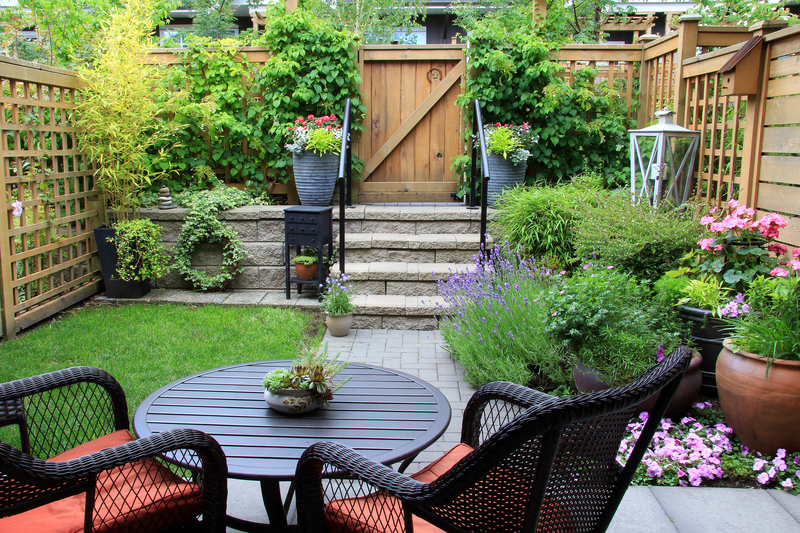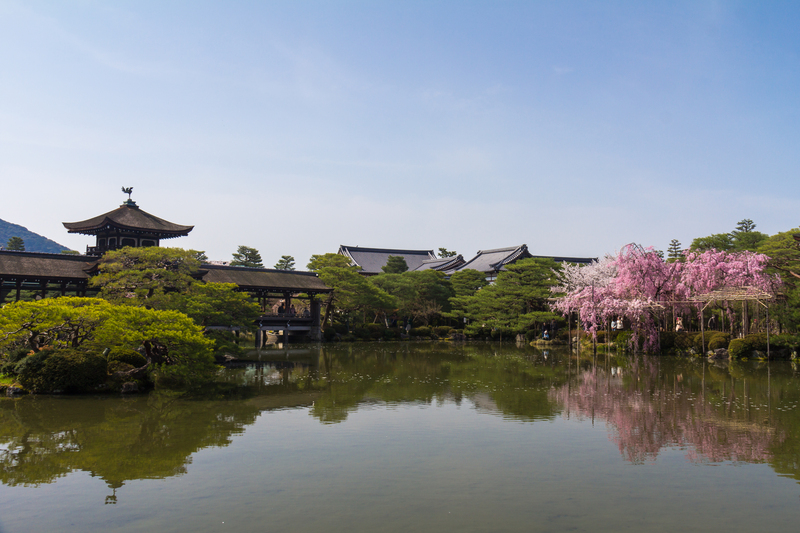Sustainable and Affordable: 5 Low Maintenance Garden Strategies
Posted on 03/09/2025
Sustainable and Affordable: 5 Low Maintenance Garden Strategies
Creating a beautiful garden doesn't have to cost the earth--literally or figuratively. With the right approach, you can design a sustainable garden that is both cost-effective and easy to maintain. In this comprehensive guide, you'll discover five eco-friendly and wallet-conscious gardening strategies that deliver long-lasting results with minimal effort. Whether you're a beginner or a seasoned green thumb, these low maintenance garden ideas are sure to inspire your next outdoor project.
Why Choose Sustainable, Low Maintenance Gardening?
Before diving into the practical strategies, let's explore why opting for a sustainable and affordable garden makes sense:
- Environmental Benefits: Reduced water usage, less reliance on chemicals, and increased biodiversity all help protect the planet.
- Cost Savings: Smart choices lower the need for ongoing purchases of fertilizers, plants, and equipment.
- Time Efficiency: Low maintenance landscaping frees up your time, letting you enjoy your garden instead of constantly tending to it.
- Health and Wellness: A thriving, chemical-free garden is safer and more enjoyable for you, your family, and local wildlife.
Let's look in-depth at five sustainable and affordable garden strategies that blend beauty with practicality.

1. Embrace Native and Drought-Tolerant Plants
The Benefits of Native Planting
Native plants are species naturally occurring in your region. Planting them is one of the most effective low maintenance garden solutions available. Here's why:
- Minimal Watering: Adapted to local rainfall, native plants require much less supplemental watering than exotic species.
- Resilience: They fend off pests and diseases better without heavy chemical intervention.
- Biodiversity: Native low care plants support local pollinators like bees, butterflies, and birds.
Choosing Drought-Tolerant Varieties such as lavender, sedum, and ornamental grasses further reduces maintenance. These tough, yet attractive plants thrive on neglect and look good year-round.
Tips for Plant Selection
- Check with your local garden center for native species recommendations.
- Look for perennial plants that return year after year, slashing replanting costs.
- Mix and match textures and bloom times for constant interest.
2. Prioritize Mulching and Ground Covers
Why Mulching is Essential in Low Maintenance Gardening
Mulching involves covering the soil with organic or inorganic materials. It's a game-changer for sustainable garden care:
- Retains Soil Moisture: Cuts down on watering needs.
- Suppresses Weeds: Less time spent pulling unwanted plants.
- Improves Soil Health: Organic mulches enrich the soil as they break down.
Best Mulching Materials for Frugal Gardeners
- Wood chips: Readily available and slow to decompose.
- Straw: Inexpensive and perfect for vegetable beds.
- Compost: Make your own using food and yard waste.
- Gravel or stone: For paths and around drought-tolerant plants.
Ground Covers: The Living Mulch
Low-growing plants like creeping thyme, ajuga, or native sedges not only prevent weeds, but also provide lovely textures and often attract pollinators. These ground cover plants deliver a lush look with minimal labor and watering!
3. Design with Smart Irrigation Systems
Water-Efficient Gardens: Save Water and Money
One of the top secrets to sustainable, low maintenance gardens is a thoughtful approach to irrigation. Traditional sprinklers waste water and often oversaturate plants. Consider these innovations:
- Drip Irrigation: Delivers water directly to plant roots where it's needed most, reducing evaporation.
- Soaker Hoses: Lay easily along borders and raised beds for targeted, gentle watering.
- Rain Barrels: Collect and store rainwater to use during dry spells--eco-friendly and cost-free!
Tips to Optimize Water Use
- Water early in the morning or evening to minimize loss to evaporation.
- Group plants with similar needs together--a strategy called hydrozoning.
- Regularly check systems for leaks or clogs to maintain efficiency.
Efficient irrigation means your low-effort garden always looks its best, while slashing time spent hand-watering and keeping your water bill in check.
4. Adopt No-Dig or Minimal Till Gardening
Healthy Soil, Less Work: The No-Dig Method
No-dig gardening is a revolutionary approach that leaves the soil structure intact, instead of turning it over each season. Here's why it's perfect for easy-care gardens:
- Soil Health: Beneficial microbes and worms thrive better, naturally aerating and fertilizing your soil.
- Weed Control: Untouched soil reduces the emergence of new weeds.
- Moisture Retention: Less disturbance means steadier moisture levels and less need to water.
- Time and Labor Savings: Skip the heavy digging for a much lighter gardening workload.
Getting Started with No-Dig Beds
- Layer cardboard or newspaper directly over grass or weeds.
- Add layers of compost, manure, or mulch on top--no digging required!
- Plant directly into your new bed and watch nature do the hard work.
No-till gardening isn't just sustainable, it's truly low maintenance gardening at its best.
5. Simplify with Edible and Container Gardens
The Power of Multi-Functional Plants
What if your garden could provide beauty and food while remaining sustainable and easy to care for? Edible landscapes are a growing trend for their affordability and functionality:
- Herbs: Rosemary, thyme, mint and chives double as beautiful ornamentals and delicious cooking ingredients.
- Fruit Bushes: Blueberries, strawberries, and currants add color and are easier than you think to grow.
- Perennial vegetables: Asparagus, artichoke, and rhubarb come back year after year with little effort.
Low Maintenance Gardening in Containers
If space or time is limited, try container gardening. This method offers several benefits:
- Flexibility: Move plants to optimize sunlight or decorate patios with ease.
- Water Conservation: Containers use less water and make it simpler to control soil quality.
- Reduced Pest Issues: Easier monitoring and protection from garden pests.
- Accessibility: Perfect for those with mobility concerns--garden while standing or seated.
Use large pots with rich soil for tomatoes, peppers, or even lemon trees if your climate allows. Choose self-watering containers for the ultimate minimal-effort garden.

Other Essential Tips for Sustainable and Easy-Care Gardening
Compost for Free Fertilizer
Turn kitchen scraps and garden clippings into nutrient-rich compost. Not only does this reduce landfill waste, it also saves money on commercial fertilizers.
Choose Quality Over Quantity
Invest in a few hardy, proven low maintenance plants rather than many delicate varieties. Carefully selected shrubs and perennials will thrive with less intervention.
Smart Pathways and Design
Use paths made from mulch, gravel, or recycled materials to define beds, control foot traffic, and make maintenance effortless.
Group by Maintenance Needs
When planning your garden, place plants with similar water, sunlight, and soil requirements together for less complicated care.
The Future of Sustainable and Affordable Gardens
Sustainable gardening is more than a buzzword--it's a rewarding lifestyle choice that benefits you, your wallet, and the earth. With these five low maintenance strategies, you can enjoy a thriving green space that suits any budget or experience level. As you design your own easy-care oasis, remember:
- Start small and expand as your confidence grows.
- Observe what works and tweak your garden accordingly.
- Share plants, seeds, and tips with neighbors for even greater savings and community connection.
Your sustainable, affordable garden transformation is just a few simple steps away. Let nature take the lead, and enjoy the beauty and bounty of a low maintenance landscape--without the high price or endless chores.
Key Takeaways for Low Maintenance, Budget-Friendly Gardening
- Opt for native and drought-tolerant plants to save water, money, and effort.
- Mulch and use ground covers to suppress weeds and lock in moisture.
- Install smart irrigation for efficient watering and reduced costs.
- Go no-dig for healthier soil and less physical labor.
- Try edible and container gardens for beauty and productivity in small, manageable areas.
Implement even a few of these strategies and watch your low maintenance sustainable garden flourish--all while keeping your wallet happy and your weekends free.

